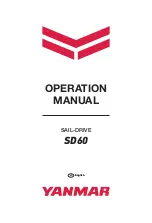
Quick Start Guide
taskit GmbH
4. Creating a terminal connection to a PC
To use U-Boot and Linux effectively as a development environment, you need terminal access via
the serial port. Later, the system can be configured to start automatically – user interaction is no
longer required. The standard way to create a serial port connection is to connect the target
computer and development computer with a null modem cable and to run a terminal emulator on the
development system.
As described below, you can use either a Linux computer or one running Windows.
4.1. Terminal access under Linux
In the Linux environment,
Kermit
fulfils this software requirement. Although also often used for
similar purposes, the
Minicom
terminal emulator should not be used, since there are many reported
problems when working with the U-Boot boot loader. There are 2 Kermit packages in many Linux
distributions. Of these, gKermit is only a command-line tool for implementing the Kermit FTP (File
Transfer Protocol); the appropriate package is cKermit. Under Debian GNU/Linux, you can install
the package simply with:
apt-get install ckermit
The packet cKermit belongs to the non-free distribution tree. If the Apt-Packet Manager couldn't
find the package, simply add
non-free
to the configuration file
/etc/apt/sources.list
for your Debian
server and execute
apt-get update
Now the apt command should work successfully.
For configuration, it is a good idea to create the configuration file .kermrc in the home directory
used by Kermit for initialisation. Use the following settings to interact with U-Boot:
# example ~/.kermrc
set line /dev/ttyS0
set speed 115200
set carrier-watch off
set handshake none
set flow-control none
robust
set file type bin
set file name lit
set rec pack 1000
set window 5
Normal users need to have read and write permissions for /dev/ttyS0. In most Linux distributions,
this is not the case. The root user must run the following command:
chmod 666 /dev/ttyS0
Page 11 of 15
Version 1.14
































